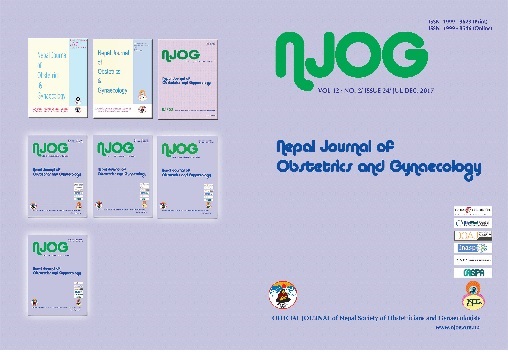Association between Anogenital Distance and External Genital Anomalies in Nigerian Newborn Infants
Keywords:
anogenital distance, hypospadias, undescended testis, newborn, NigeriaAbstract
Aim: Animal studies regarding endocrine dysfunction have linked anomalies of male external genitalia with reduced anogenital distance (AGD). Human studies have associated shorter AGD with genital anomalies in males. The aim of the present study is to report the AGD measurement among Nigerian newborn infants with undescended testis and/or hypospadias and compare the results with that of infants with normal external genitalia.
Methods: In this case-control study, the AGD of 17 newborn infants with abnormal external genitalia (undescended testis (UDT)/hypospadias) was measured and the result compared with that of 34 newborn infants with normal external genitalia (descended testes and no hypospadias, epispadias or chordee). Each case recruited was matched for birth weight and length with two controls delivered consecutively. Thus, a total of 51 (cases and controls) newborn infants were ultimately studied. The differences in AGD between infants with abnormal external genitalia compared with that of infants with normal external genitalia were examined, using two-tailed Student’s t-test, with p-value set at < 0.05. In addition, the AGD in infants with hypospadias was compared with the AGD in infants with UDT.
Results: The mean AGD was 27.6±4.9mm (95% CI = 26.0-29.2), 26.3±5.4mm (95% CI = 23.0-29.6) and 25.1±6.2 mm (95 CI = 20.1-30.1) in infants with normal external genitalia, UDT and hypospadias, respectively; p > 0.05. The mean AGD was shorter in infants with hypospadias compared with infants with UDT, p > 0.05.
Conclusions: The AGD in Nigerian newborn infants with either UDT or hypospadias tended to be shorter than that of their counterparts with normal genitals and this reduction was more in infants with hypospadias compared with infants with UDT.
Downloads
Downloads
Published
How to Cite
Issue
Section
License
Copyright on any research article in the Nepal Journal of Obstetrics and Gynaecology is retained by the author(s).
The authors grant the Nepal Journal of Obstetrics and Gynaecology a license to publish the article and identify itself as the original publisher.
Articles in the Nepal Journal of Obstetrics and Gynaecology are Open Access articles published under the Creative Commons CC BY-NC License (https://creativecommons.org/licenses/by-nc/4.0/)
This license permits use, distribution and reproduction in any medium, provided the original work is properly cited, and it is not used for commercial purposes.



